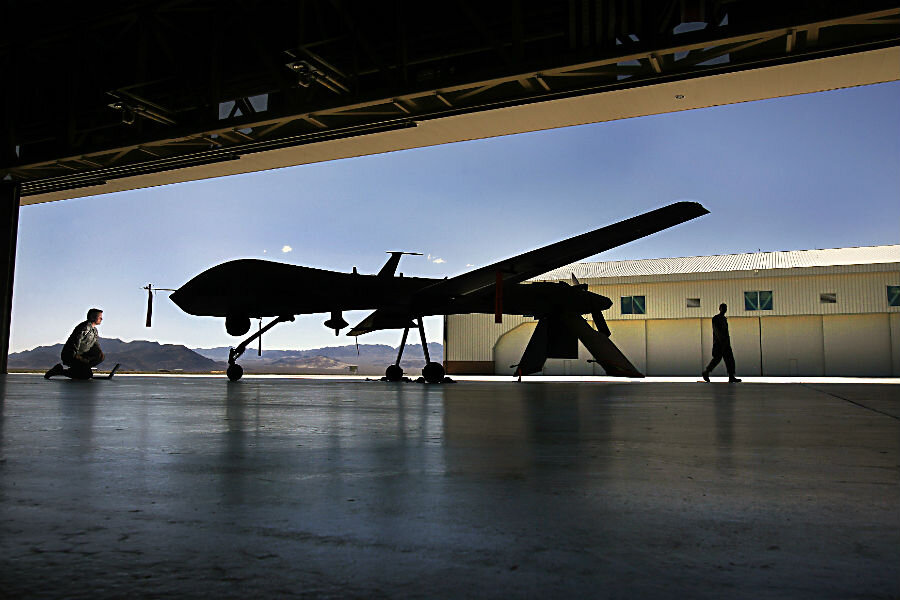Why is the military flying drones over US soil?
An official report released last week shows that the United States Department of Defense (DoD) has repeatedly deployed unmanned aircraft systems (UAS), or drones, over US territory the last 10 years.
The report, completed last March by the Defense Department Inspector General office, highlights the DoD’s use of UAS assets in the US since an interim guidance on domestic drone operations was released in September, 2006. Background for the report included a review of DoD policies and federal statutes, as well as interviews with representatives from various DoD offices including the Army, Navy, Marine Corps, Air Force, and the National Security Agency.
Even as the US continues its drone operations overseas, the DoD report found fewer than 20 instances of requests for the domestic use of drone aircraft through the past decade. And of those requests, several were denied. While a complete listing of drone exercises was not made public, the Pentagon released at least a partial catalog comprising of nine UAS operations between 2011 and 2016, all involving either training or assistance to first responders.
The DoD has also posted an explanation of their domestic operations on its website.
Following its review of DoD drone operations and the regulations surrounding them, the Inspector General's office found that the Defense Department “takes the issue of DoD UAS support to domestic civil authorities very seriously,” adding that “Great care is taken by DoD personnel to protect the American public's civil liberties and privacy rights.”
“Our review of UAS policy implementation across the department, coupled with our unit visits to discuss actual events, did not reveal evidence that any DoD entity has employed a UAS or conducted [Processing, Exploitation, and Dissemination] in support of domestic civil authorities contrary to laws, regulations, or national policies,” the report concluded.
The Inspector General also found that while units utilizing drones “understand the American public's legitimate concerns about civil liberties and privacy rights, they do not operate UASs any differently from manned platforms with similar capabilities.”
Additionally, the report included three recommendations regarding drone operations, all of which were met with “responsive” comments from the Assistant Secretary of Defense for Policy, Homeland Defense & Global Security.
While the findings of the report appear to place such operations firmly within legal boundaries, concerns over the potential for ongoing spy missions over the US have prompted some to call for a revision to existing drone laws to more closely correspond with current technology.
“Sometimes, new technology changes so rapidly that existing law no longer fits what people think is appropriate,” American Civil Liberties Union senior policy analyst Jay Stanley told USA Today, adding that “It's important to remember that the American people do find this to be a very, very sensitive topic.”
Current guidance on domestic drone operations updated last year restricts “surveillance on US persons” using drones unless such action is “permitted by law and approved by the Secretary of Defense.” The directive also notes that the use of drones equipped with weaponry may only be used in US territory for training and testing purposes.
The transparent report on domestic drone usage stands in contrast to the US military’s harder-to-read history of lethal drone strikes and reconnaissance overseas. Despite President Obama’s 2013 announcement that his administration would be more forthcoming regarding its foreign drone actions, Mr. Obama had made “virtually no progress” on drone policy since then.
The White House announced Monday that the US would disclose information on combatant and civilian casualties resulting from drone strikes abroad since 2009.






